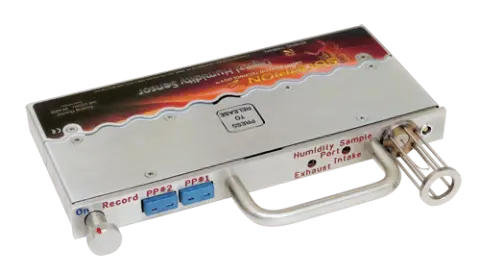Getting bake results you can trust starts with data you can trust. The right temperature data logger helps you see what’s actually happening in the oven – at the product surface, inside the dough, and in the air moving around it – so you can dial in consistency, reduce waste, and keep customers happy. The experts with Reading Thermal would like to show you how to choose the right temperature data logger for industrial baking that fits your goals.
Start With Your Baking Goals
Begin by asking what you want to fix or improve. Are you trying to eliminate underbaked centers, even out color across the belt or match results across multiple plants? The clearer the goal, the easier it is to decide which measurements matter most and which sensors you’ll need on day one versus later. When you align the logger to a specific outcome – say, better moisture control in crackers – you’ll avoid paying for features you won’t use.
Understand What You’re Measuring
Industrial baking isn’t just about “temperature.” You’ve got product core temps, surface temps, air temps, radiant heat, humidity, airflow, and heat flux all working together. A strong system lets you capture these pieces separately and then view them together. Reading Thermal’s SCORPION® 2 Data Logger can help you see oven performance and product response in the same run. When you can correlate air temperature spikes with a pale bottom or a wet center, you can fix the root cause instead of the symptom.
Consider Logger Design and Durability
Ovens are tough on equipment. Your logger should handle high heat, frequent use, and fast changeovers. Look for a rugged body, a thermal barrier designed for your oven conditions, and connectors that stand up to repeated sensor swaps. A modular approach is helpful: you can start with core temperature and air temperature, then add a Humidity Sensor, Air Velocity Sensor, or Heat Flux Sensor as your process matures – without replacing the base logger.
Look for Actionable Software
Data only helps if it’s easy to read and act on. Favor software that turns runs into plain-language insights: trend lines you can compare run-to-run, zone-by-zone overlays, and visuals that link a change in airflow to a change in product color. With SCORPION® Software, for example, you can review profiles, spot hot and cool zones, and share standardized reports with quality, maintenance, and R&D so everyone’s working from the same playbook.
Keep Calibration and Support in Mind
Reliable data depends on sensors that stay true over time. Check that your logger and probes have a clear calibration path and that you can get replacements and service quickly. Consider the value of working with a team that focuses on industrial baking every day; when support understands ovens, belts, and dough behavior, troubleshooting gets faster and your learning curve gets shorter.
Match Solutions To Typical Baking Challenges
If color is inconsistent across the belt, our Temperature Sensor Array and Heat Flux Sensor can help you balance heat transfer by zone. If you’re chasing shelf-life or crispness, add Humidity and Air Velocity Sensors to see how moisture and movement affect the final bite. The beauty of a flexible platform is that you can tailor the kit to the problem and expand as your process evolves.
You can call Reading Thermal at 610-678-5890 or contact us online to learn more about how to choose the right temperature data logger for industrial baking.

